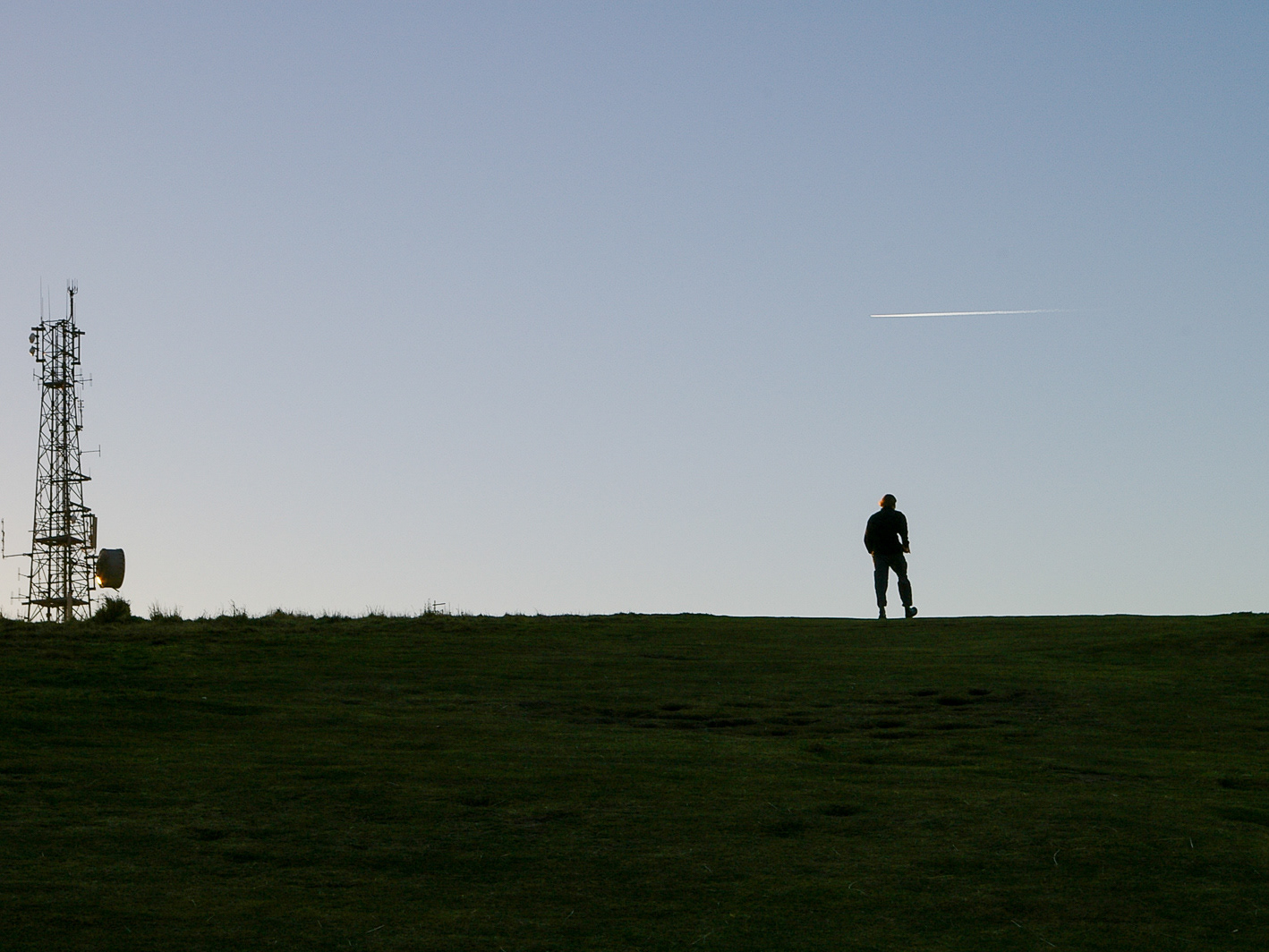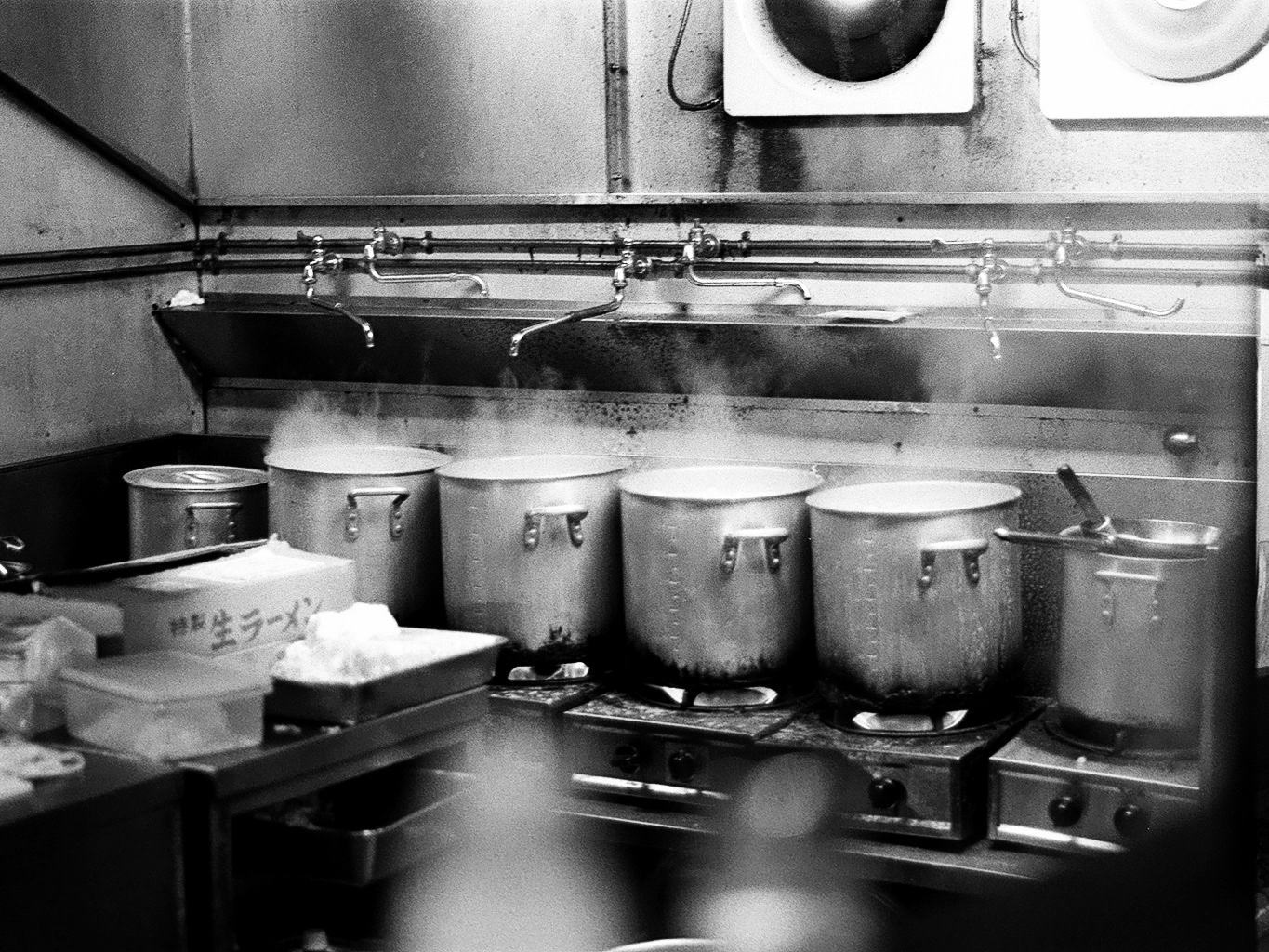Lesson 56 - Water Lilies (There is nothing to be added to Monet 250 paintings.)
Lesson 57 - Oxford Autumn (Combining several clichés)
Lesson 58 - One Night in Bangkok (Straighten architecture photographs to avoid imbalance, they say.) [see also Lesson 30 and Lesson 48 (appropriation)]
Lesson 59 - Piazza San Marco (Take time to find the best point of view.)
Lesson 60 - My friend Leo playing saxophone. (Kitsch) [see also Lesson 49 (Kitsch)]
Lesson 61 - Sunset (“When words become unclear, I shall focus with photographs. When images become inadequate, I shall be content with silence.” - Ansel Adams)
Lesson 62 - Independent cinema toilet. (Weak or shallow principal plot.)
Lesson 63 - La Habana (Subject blends into the background.)
Lesson 64 - Peek into a subway (Double exposure) [see also Lesson 4 (Thirty-six exposures)]
Lesson 65 - Rain (Strap obstructing the lens in a rangefinder camera.)
Lesson 66 - Cable car will be here. (Wrong focal length.)
Lesson 67 - Everything will be ok. (Superficial juxtaposition)
Lesson 68 - A shrub ("Look at the subject as if you have never seen it before. Examine it from every side. Draw its outline with your eyes or in the air with your hands, and saturate yourself with it." - John Baldessari)
Lesson 69 - Teppanyaki (Obstructing wires) [see also Lesson 55 (appropriation)]
Lesson 70 - An exhibition (‘You cannot hang an event on the wall, only a picture." - Mary McCarthy)
Lesson 71 - Danaë and the Shower of Gold (Sacral painting light cliché) [See also Lesson 50 (impressionist cliché)]
Lesson 72 - Street brass band ("Exposure time 1/4s is used for motion blur effects and/or low-light photography, but only practical with a tripod-supported camera." - Wikipedia)
Lesson 73 - Speed (Don't take pictures while driving.)
Lesson 74 - London (Excessive use of Instagram filters)
Lesson 75 - Coke or Pepsi? (Light is the crucial element in photography, wait for the sun.)
Lesson 76 - C'mon Barbie (Strive for personal and emotional expression, even if your model is the ultimate pro.)
Lesson 77 - Waiting (“In photography there is a reality so subtle that it becomes more real than reality.” - Alfred Stieglitz)
Lesson 78 - Beach party (Experiments in wedding photography can be refreshing, but do not go too far.)
Lesson 79 - Abandoned pool (Superficial urbex.)
Lesson 80 - Cinque Terre (Overprocessed black and white photo.)
Lesson 81 - When Doves Cry (Color solarization out of hand) [See also Lesson 1 - Light leak]
Lesson 82 - Rothko (Beginning of a film roll.)
Lesson 83 - Betty ("I don’t need to know anything about the people I photograph, but it’s important that I recognize something about myself in them." - Rineke Dijkstra)
Lesson 84 - The morning after (In magic realism, the magical elements blend with the real world, sometimes too much.)
Lesson 85 - Contact sheet (An author should be able to deside on which is the ultimate photo.)
Lesson 86 - Pareidolia (Keep calm and shoot rubbish, whatever's going on around.)
Lesson 87 - Abandoned boat at West Lake, Hanoi (Mockumentary)
Lesson 88 - Aruba (Shooting into the sun causes lens flares.) [see also Lesson 15 - Harsh sun]
Lesson 89 - After the party (Romanticism emphasizes intense emotion as an authentic source of aesthetic experience.)
Lesson 90 - A House(Central compostion with interleaving background and foreground)
Lesson 91 - Old Masters clouds (Scratches and specks from sloppy develping.)
Lesson 92 - Four benches (“After I snap the shutter I never know if a photograph is truly special. Even months later I usually don’t know.” - Alec Soth)
Lesson 93 - After a sudden gust of wind, after Jeff Wall, after Hokusai. (Coming late)
Lesson 94 - Parking garage (Do not smoke while shooting.)
Lesson 95 - La Troja, Patrimonio Cultural y Musical de la Ciudad de Barranquilla (Do not shoot while dancing.)
Lesson 96 - 24x30x12 (The difference between the color temperature of incandescent tungsten light and daylight can be as high as 3000K.)
Lesson 97 - From the hotel room (“If you could say it in words, there would be no reason to paint.” - Edward Hopper)
Lesson 98 - Ikebana (Boredom in perfection.)
Lesson 99 - At Lake Sochatoga, Paipa (Hazy desaturated matte - a cheap way to emotions.)
Lesson 100 - The Old Man and the Sea (Can not decide what is wrong.)
Lesson 101 - Doppio (The Japanese concept of 間 (ma) represents emptiness, the pure void between and around things, something that exists only in the mind of the viewer, something full of possibilities. Composition theory usually calls it the negative space.)
Lesson 102 - Central Park (Vignetting is a reduction of an image's brightness or saturation toward the edges.) [see also Lesson 14 (Holga lomography)]
Lesson 103 - Lonely Night in Honolulu (Too dark.)
Lesson 104 - Butcher's shop (When creating a mood board, it is important to pay attention to all of images as a whole and how they relate to one another.)
Lesson 105 - Strašnice, Prague 10 ("I am never interested in the individual, but in the human species and its environment." - Andreas Gursky) [see also Lesson 17 (grid and Gursky)]
Lesson 106 - Haji Ali Dargah ("Do not follow the crowd. Turn off the tourist route and stroll through the streets. Small, non-touristic streets are always imbued with local colors, and you can find unexpected moments there.") [ see also Lesson 28 (non-tourist photo of tourist place) ]
Lesson 107 - Elizabeth town, New Jersey ("So it is not just that there was nothing and then all of a sudden the symbolic order is here— rather, that there was nothing and then, all of a sudden, it is as if the symbolic order was always already here, as if there was never a time without it. - Slavoj Žižek, Absolute Recoil") [ see also Lesson 86 (Pareidolia) ]
Lesson 108 - Hainan, the "Chinese Hawaii" (Sometimes, an old photo gets a new - unwanted - context.) [ see also Lesson 40 (questioniing iconicity) ]
Lesson 109 - Wasabi (Some subjects are difficult to aestheticize even with instagram filters)
Lesson 110 - Aoba Castle (Sepia toning gives monochrome photographs rich dark brown tones resulting in pleasant antique feeling. It should probably not be used at all.)
Lesson 111 - Group portrait (Subjects too close) [ see also Lesson 25 (opposing opinion) ]





